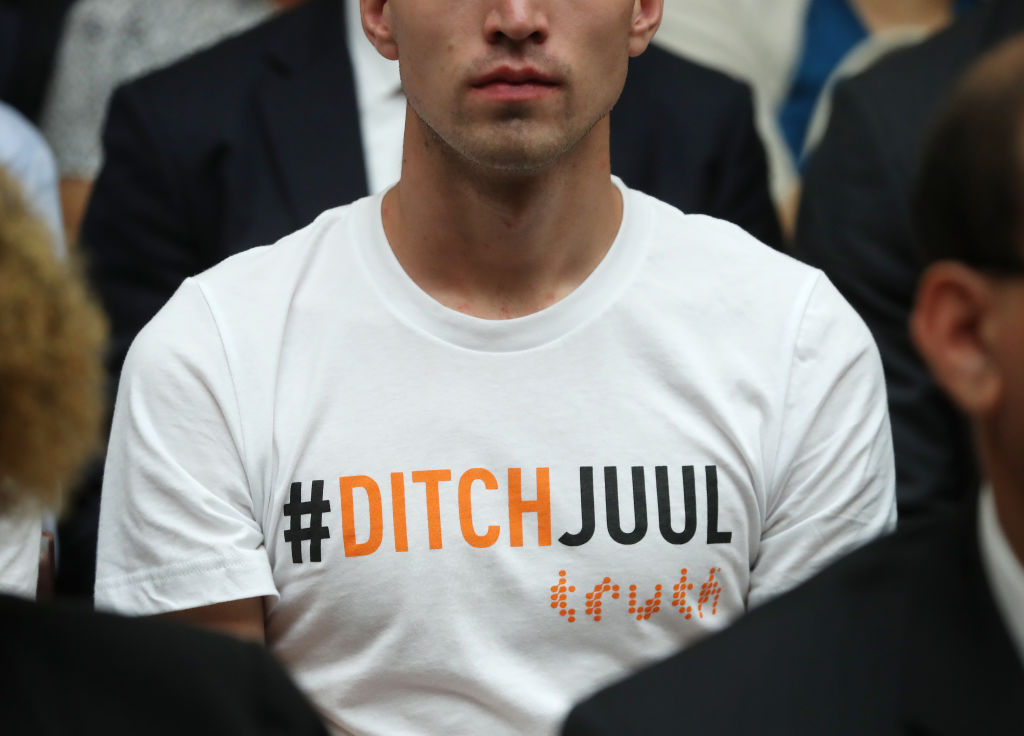
Juul Labs, the e-cigarette company so popular its name became a verb, wouldn’t be where it is without social media. In the company’s early years, a steady stream of posts from users and influencers helped turn Juul from a smoking alternative to a cultural phenomenon. So many Juul users—many of them teenagers—voluntarily posted about vaping that it hardly made a difference when the company in 2018 silenced its own accounts to help stem its popularity among underage users.
Now, in the wake of a vaping-related lung disease outbreak that has sickened almost 2,700 and killed 60, teenagers and young adults are picking up where the company left off. In a stark about-face, many of the same people who might have once posted about their #JuulLife are now using social media to urge their friends to quit vaping.
They face an uphill battle. With about 5 million teenagers reporting e-cigarette use as of the latest federal estimate, underage vaping is regularly called an epidemic by top U.S. health officials. And, to be sure, plenty of people still post about the habit on social media: this month, a study found that pro-vaping posts on Instagram outnumber anti-vaping posts tagged with the FDA’s sponsored hashtag, #TheRealCost, 10,000 to 1.
Still, discontent among young people has been simmering. A year ago, Kamal Mazhar, now 17 and a high school senior in Virginia, walked into a school bathroom and found a dozen students jammed into two stalls, all vaping. In that moment, he says he realized vaping’s “ridiculous” spread, and grew frustrated by the lack of e-cig-focused prevention efforts, and by adults’ poor understanding of the phenomenon. “No one was inside the bathrooms,” he says.
Mazhar and three friends, none of them serious e-cig users, channeled that frustration into the Instagram advocacy page Teens Against Vaping, which posts news articles and personal testimonies about vaping. Mazhar also submitted written testimony for a July Congressional hearing on Juul, during which two New York City teenagers testified that Juul reps visited their 9th grade classroom in 2017 and told them the products were “totally safe”—a promise that would ring hollow by summer 2019, with youth addiction common and an outbreak of vaping-related lung injury on the rise.
Florida 18-year-old Chance Ammirata was one of the first young people to post on Instagram about a vaping-related health scare: a collapsed lung he says was caused by his Juuling habit, and that forced doctors to rush him into emergency surgery. (Collapsed lungs, as well as pneumonia-like illness, respiratory distress and gastrointestinal issues, are among the conditions reported by people who have gotten sick after vaping.) “It felt like an obligation for me to spread that message, because if I don’t, my friends are going to willingly keep on doing what put me in the hospital,” Ammirata says.
His posts on Instagram and Twitter inspired thousands upon thousands of messages from vapers, most of them teenagers, vowing to quit. Deciding to capitalize on the attention, he founded the Lung Love Foundation, a group aiming to educate teenagers about the dangers of vaping and nicotine addiction. Through the Foundation, he has spoken at schools and on Capitol Hill, produced an educational podcast and partnered with the mayor of Miami Beach on implementing an anti-vaping curriculum.
Simah Herman, a California 18-year-old, went viral only a few weeks after Ammirata. Almost a million people liked a series of photos she posted to her Instagram, showing her in a hospital bed, hooked up to a ventilator due to lung damage her doctors determined stemmed from vaping. In one, Herman stares solemnly into the camera while holding a handwritten sign reading, “I want to start a no vaping campaign.”
Public-health groups are now jumping on the trend, too. The anti-youth-smoking Truth Initiative this month paid six TikTok influencers—Nick Uhas, Tisha Alyn, Shane Boyer, Nico Bisesi, Kalani and Samuel Grubbs—to create videos that showed them submerging vapes in ice water; Truth Initiative also encouraged other TikTok users to create their own creative quit videos and tag them with #ThisIsQuitting. As of Jan. 21, #ThisIsQuitting posts had cumulatively racked up more than 1.4 billion views.
Science vlogger Uhas—who, at 34, admits he’s a bit older than the stereotypical Juuler—says social media is a smart way to reclaim the narrative around youth vaping. “You have to go through the same tactics” that made something popular, Uhas says. “It’s wise to go where the eyeballs are looking.”
Juul’s nicotine pods have attracted teenagers’ ire despite the fact that the U.S. Centers for Disease Control and Prevention (CDC) has said most cases of e-cigarette- or vaping-product-associated lung injury (EVALI) appear related to bootleg vaping products that contain THC, some tainted by the additive vitamin E acetate. (Both Herman and Ammirata maintain they got sick after Juuling, and say they have not vaped THC.)
Juul declined to comment.
There are some signs that these efforts are working. The Truth Initiative says 90,000 people have registered for its text-message-based vaping cessation program, about 20,000 after it launched the TikTok campaign.
These posts still attract their fair share of scorn from fellow social media users.”You’re always going to have haters,” Ammirata says. But Mazhar, of Teens Against Vaping, says the glamour of vaping is wearing off. The minimal amount of teasing he and his fellow advocates drew from other students has faded away, he says.
In the beginning, “when we would walk in the bathroom, people would make some under-their-breath comment,” Mazhar says. “That has stopped.”
More Must-Reads from TIME
- Cybersecurity Experts Are Sounding the Alarm on DOGE
- Meet the 2025 Women of the Year
- The Harsh Truth About Disability Inclusion
- Why Do More Young Adults Have Cancer?
- Colman Domingo Leads With Radical Love
- How to Get Better at Doing Things Alone
- Michelle Zauner Stares Down the Darkness
Write to Jamie Ducharme at jamie.ducharme@time.com